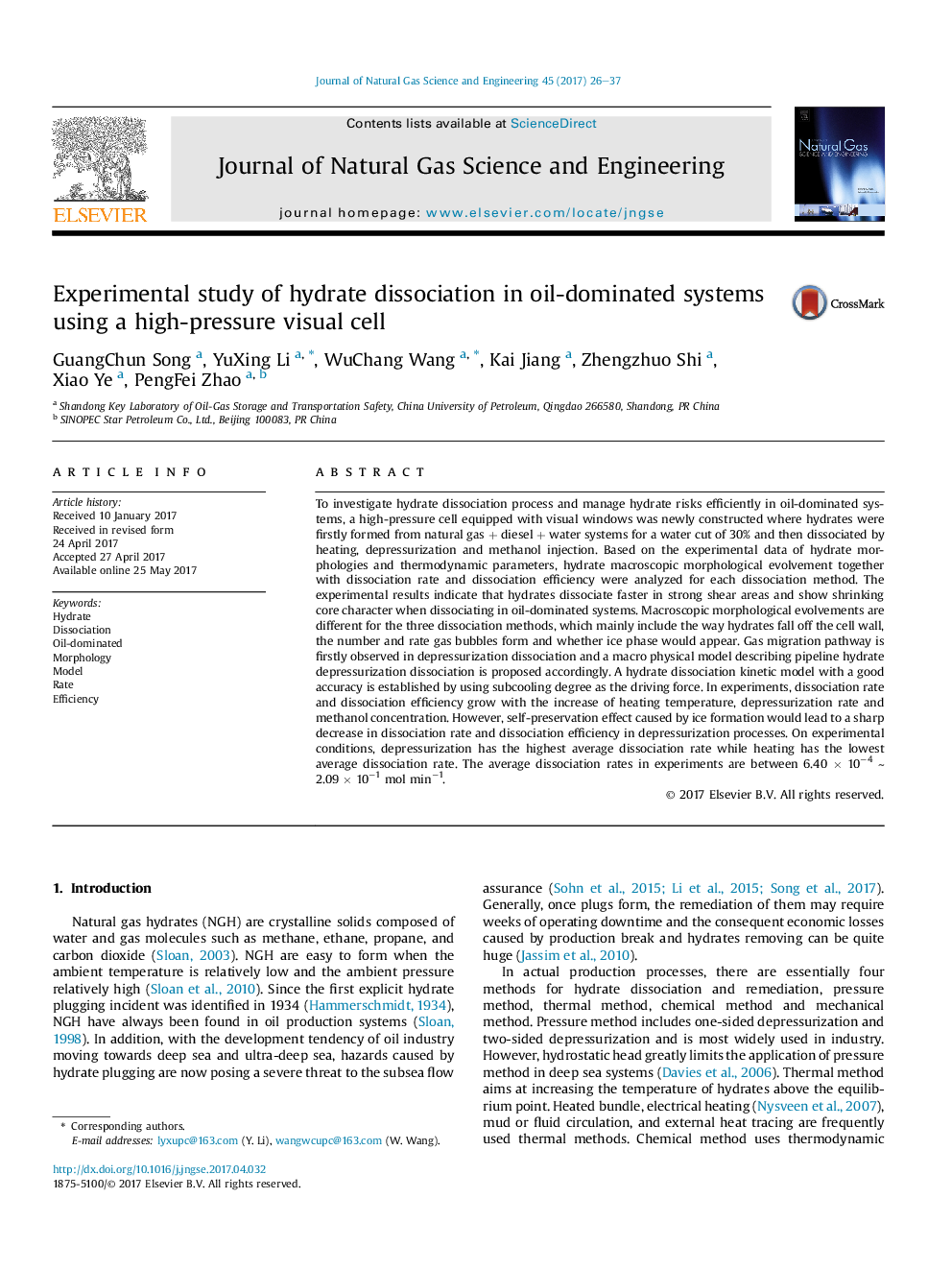| کد مقاله | کد نشریه | سال انتشار | مقاله انگلیسی | نسخه تمام متن |
|---|---|---|---|---|
| 5485004 | 1522998 | 2017 | 12 صفحه PDF | دانلود رایگان |
عنوان انگلیسی مقاله ISI
Experimental study of hydrate dissociation in oil-dominated systems using a high-pressure visual cell
ترجمه فارسی عنوان
مطالعه تجربی هیدرات تجزیه در سیستم های تحت فشار روغن با استفاده از یک سلول بصری فشار بالا
دانلود مقاله + سفارش ترجمه
دانلود مقاله ISI انگلیسی
رایگان برای ایرانیان
کلمات کلیدی
هیدرات انحلال، نفت تحت سلطه، مرفولوژی، مدل، نرخ، بهره وری،
موضوعات مرتبط
مهندسی و علوم پایه
علوم زمین و سیارات
علوم زمین و سیاره ای (عمومی)
چکیده انگلیسی
To investigate hydrate dissociation process and manage hydrate risks efficiently in oil-dominated systems, a high-pressure cell equipped with visual windows was newly constructed where hydrates were firstly formed from natural gas + diesel + water systems for a water cut of 30% and then dissociated by heating, depressurization and methanol injection. Based on the experimental data of hydrate morphologies and thermodynamic parameters, hydrate macroscopic morphological evolvement together with dissociation rate and dissociation efficiency were analyzed for each dissociation method. The experimental results indicate that hydrates dissociate faster in strong shear areas and show shrinking core character when dissociating in oil-dominated systems. Macroscopic morphological evolvements are different for the three dissociation methods, which mainly include the way hydrates fall off the cell wall, the number and rate gas bubbles form and whether ice phase would appear. Gas migration pathway is firstly observed in depressurization dissociation and a macro physical model describing pipeline hydrate depressurization dissociation is proposed accordingly. A hydrate dissociation kinetic model with a good accuracy is established by using subcooling degree as the driving force. In experiments, dissociation rate and dissociation efficiency grow with the increase of heating temperature, depressurization rate and methanol concentration. However, self-preservation effect caused by ice formation would lead to a sharp decrease in dissociation rate and dissociation efficiency in depressurization processes. On experimental conditions, depressurization has the highest average dissociation rate while heating has the lowest average dissociation rate. The average dissociation rates in experiments are between 6.40 Ã 10â4 â¼ 2.09 Ã 10â1 mol minâ1.
ناشر
Database: Elsevier - ScienceDirect (ساینس دایرکت)
Journal: Journal of Natural Gas Science and Engineering - Volume 45, September 2017, Pages 26-37
Journal: Journal of Natural Gas Science and Engineering - Volume 45, September 2017, Pages 26-37
نویسندگان
GuangChun Song, YuXing Li, WuChang Wang, Kai Jiang, Zhengzhuo Shi, Xiao Ye, PengFei Zhao,
